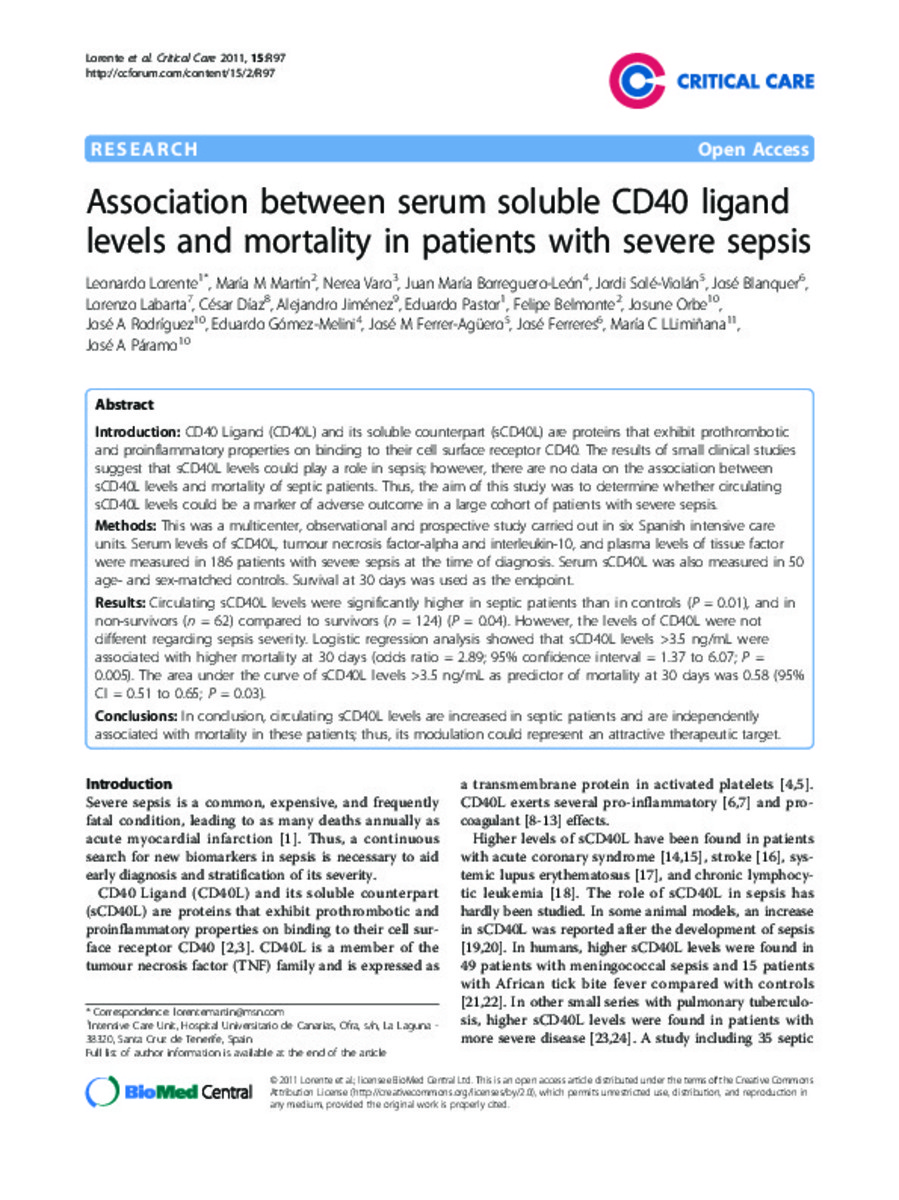Association between serum soluble CD40 ligand levels and mortality in patients with severe sepsis
Palabras clave :
Sepsis
CD40 ligand
Fecha de publicación :
2011
Editorial :
BioMed Central
Cita:
Lorente L, Martin MM, Varo N, Borreguero-Leon JM, Sole-Violan J, Blanquer J, et al. Association between serum soluble CD40 ligand levels and mortality in patients with severe sepsis. Crit Care 2011 Mar 15;15(2):R97.
Aparece en las colecciones:
Estadísticas e impacto
0 citas en

0 citas en

Los ítems de Dadun están protegidos por copyright, con todos los derechos reservados, a menos que se indique lo contrario.












